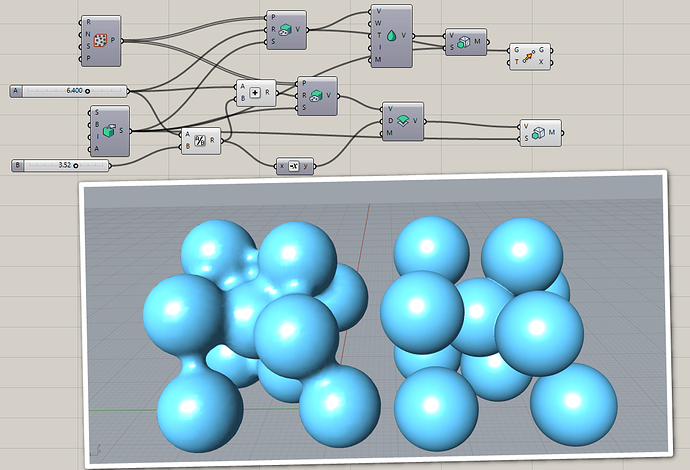Hello guys,
I’ve a really easy question for you, not sure about the easiness reply:
What’s the fastest and best method to pass from Metaballs isocurves to Meshes in 2020 with Rhino 6?
So going from this
to meshes.
I’m trying to create and update thread for this interesting topic.
.
.
.
I did my reasearch and I’ve read a lot of topics:
Here they are suggesting cocoon (too slow) and chromodoris (for rhino 5, I’ve to check if its compatible with rhino 6).
After they are suggesting this magic “Ball Pivot” component, but I’m not finding it (is it related to “The Milkbox” but honestly I’ve no clue how to download and use it).
Here there is an onld good component by @david stasiuk in VB, quite old and not that fast. it’s an “okay” solution.
Here appears for the first time the MeshFromPoints component did by @Tudor_Cosmatu, but it’s for Rhino and for Rhino 5 moreover.
There is a link redirecting to a veeery old thread by @DavidRutten (11 years ago)
But I’ve found no explanation.
someone is asking also about surface, a solution seems to be passing through Rhino, but I wanted to stay in GH only.
Last thread is linking both MeshFromPoints both Ball Pivot.
Maybe there is already an update solution to this problem, but it’s quite well hide in the GH’s Q&A world ![]()
Thanks,
Sunny greatings,
Michele.




 ahahha
ahahha

 don’t know the PC u have but for the sake of the project was too much… the solution of
don’t know the PC u have but for the sake of the project was too much… the solution of 
